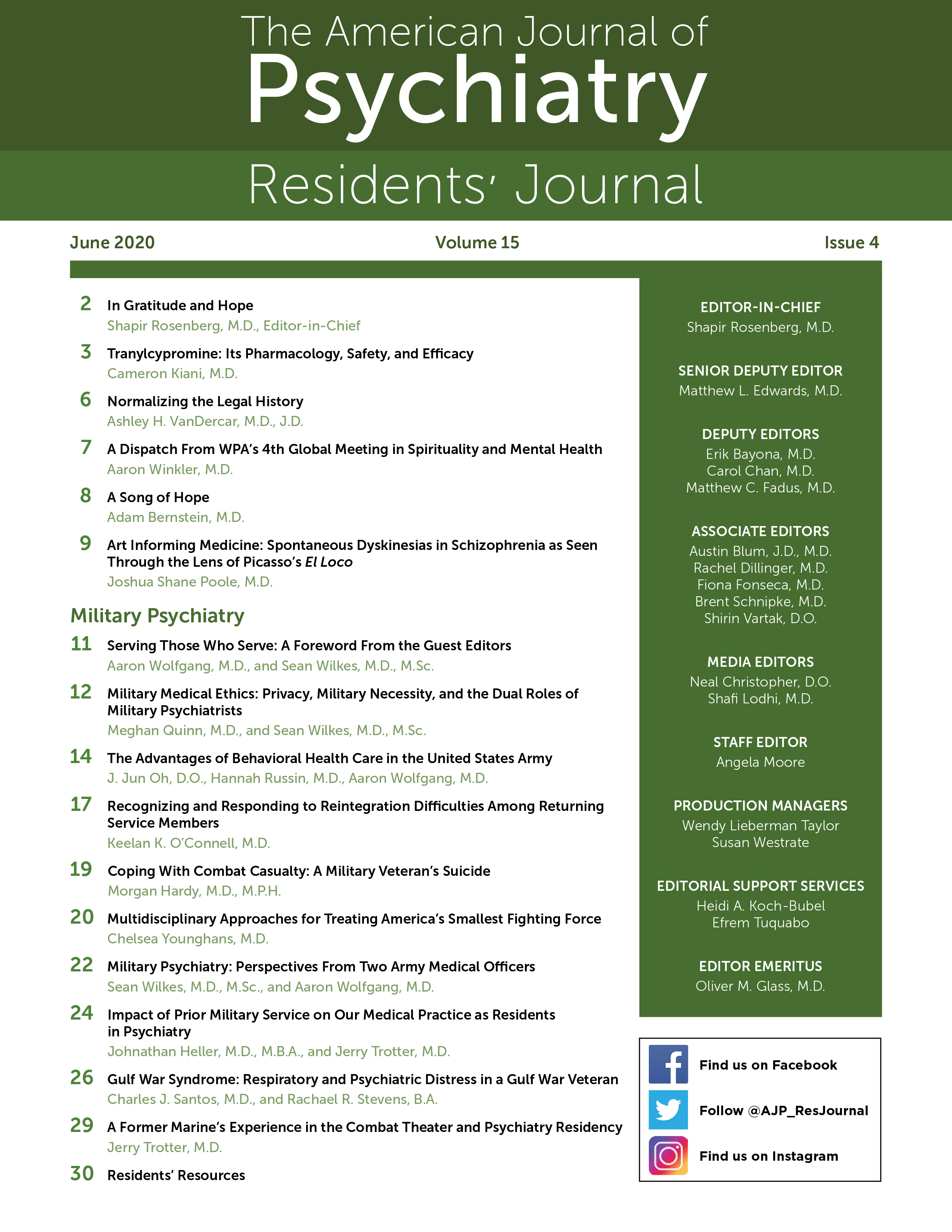The best way to find yourself is to lose yourself in the service of others.
—Mahatma Gandhi
It is an honor and privilege to introduce this special section of the Residents' Journal on military psychiatry. Active duty service members and veterans together make up approximately 6% of the U.S. population (
1), yet the breadth of issues facing these populations are underrepresented in medical education.
To begin, we recognize the two very distinct though interrelated health systems that care for those who serve or have served in the military. The U.S. Department of Veterans Affairs, commonly known as the VA, serves the health needs of veterans after they have completed their military service. The Military Health System, by contrast, is run by the Department of Defense and serves the approximately half-million active duty soldiers, sailors, airmen, and marines as well as their immediate families and retirees. Although these health systems treat different populations and face unique challenges, in this military special section, we intend to highlight matters affecting veterans and active duty service members alike, as well as their families.
Of the nearly 8,500 U.S. service members who have lost their lives in Iraq and Afghanistan since 2001, 113 were lost between 2016 and 2018 (
2). In those 3 years, 1,534 U.S. service members—over ten times more—lost their lives to suicide (
3). This is in addition to the estimated 18 to 22 U.S. veterans who die by suicide every day (
4). As the intensity of U.S. combat operations in the Middle East has declined over the past decade, so too has the number of U.S. combat casualties. However, as this shift has occurred, suicide has significantly surpassed battlefield injury as a leading cause of service member mortality. This is a stark reminder that despite the tragedies of war, the sacrifice of service continues well beyond the battlefield.
The nature of these sacrifices is elegantly chronicled by the contributors of this issue, who discuss, among other topics, the depths of combat trauma, the experiences of children of service members, the intersection of residency training with prior military service, the ethical challenges of military psychiatry, the many unique advantages of the military health system, and a case of a veteran struggling with a suspected service-related illness.
This special issue highlighting the topic of military psychiatry would not have been possible without the dedicated contributors who devoted their time and energy throughout the editorial process to share their invaluable perspectives and experiences. We thank them for their service. We also extend our gratitude to all the service men and women and their families who have sacrificed in service to the principles that our country represents. This issue is a tribute to them.
